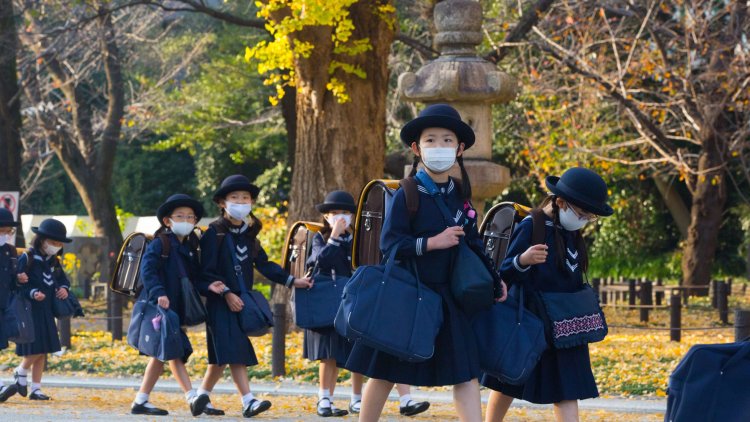Hair and underwear color have been removed from the controversial dress code in Tokyo schools.
According to the Japanese daily Asahi Shimbun, schools in Fukuoka, on the island of Kyushu, have restrictions regulating pupils' hairstyles and mandating both the color and design of their underwear.

Being a student in Tokyo meant having to look a specific way for decades. All pupils were required to dye their hair black, various hairstyles were prohibited, and even their underwear had to be a specific color under the public school system's dress code.
However, the city's authorities said this week that these restrictions, which have recently come under examination and have been condemned as antiquated, will be repealed.
Nearly 200 public schools in Tokyo will abandon five guidelines, including prohibitions on hair and underwear color, as well as a ban on "two blocks" hairstyles, which are long on top and short on the back and sides — a popular trend in many nations.
The practice of penalizing pupils with a type of house arrest, as well as confusing language in the standards on what is considered "typical of high school students," are among the restrictions being eliminated.
Thousands of Japanese women have joined a campaign to ban the wearing of high heels at work.
The policy modifications will take effect on April 1st, the first day of the new academic year. Last year, Tokyo's board of education conducted a poll in which schools, students, and parents were asked about their opinions on the rules.
Tokyo isn't the only Japanese city with a rigorous dress code; similar regulations exist throughout the country, with many schools forcing pupils to wear specific-colored shoes and socks.
According to the Japanese daily Asahi Shimbun, schools in Fukuoka, on the island of Kyushu, have restrictions regulating pupils' hairstyles and mandating both the color and design of their underwear.
Last year, Fukuoka, like Tokyo, conducted a public survey in which students complained that the dress code caused them stress and hampered their ability to express themselves, according to Asahi.
A South Korean politician has been chastised for her attire. What was her transgression? She was dressed in a gown.
In 2017, a high school girl in Osaka prefecture filed a lawsuit against her school, a case that drew national attention and sparked extensive public debate about restrictive clothing regulations.
According to Asahi, she claimed that she was forced to dye her naturally brown hair black when she first started school and that she was told to re-dye it whenever her brown roots grew back. She was eventually penalized in school for not dyeing it frequently enough.
Her lawsuit claimed that the constant coloring had harmed her hair and scalp, as well as caused her emotional anguish. She was awarded damages of 330,000 yen (about $2,790) last year.
Since then, more kids and families have voiced similar grievances, and numerous schools have made modifications to their clothing policies.
According to Asahi, a school in Ube, Yamaguchi prefecture, will be the first in the city to establish a "genderless" uniform, with students of all genders given the option of slacks or skirts, marking a significant departure from Japan's still-dominantly gendered clothing regulations.

 Boakyewaa Lawrencia
Boakyewaa Lawrencia 



































